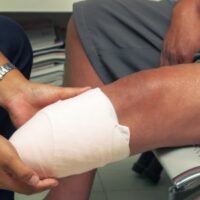Why Are Maryland Maintenance Workers At High Risk Of Amputation?

Amputations are fortunately a rare form of workplace injuries for Maryland maintenance workers, accounting for just over 6,700 per year according to nationwide data compiled by the US Bureau of Labor Statistics (BLS). Of course, the fact that they are uncommon does not make the implications any less tragic for employees who suffer amputation injuries. Your life is forever changed even without the tip of a finger, while major workplace accidents leading to loss of limbs can have devastating consequences.
Maryland’s workers’ compensation system does pay benefits for maintenance workers who suffer amputation while working around machinery. If you qualify, you have access to benefits that are different from other types of on-the-job injuries or occupational diseases. You can talk to a Maryland maintenance worker injury lawyer about the specifics, but it is useful to know why these employees are at high risk of amputations.
Hazardous Mechanical Components
The job of a maintenance worker involves problem solving, repairing machinery, and performing engineering tasks related to a building’s basic systems. These tasks put you in very close proximity to mechanical, electrical, plumbing, and fire prevention equipment. The key hazards of these components include:
- Point of operation, i.e., the focal point where the machine performs the work, such as fans and exhaust components;
- The apparatus that transmits energy through turning or rotation, such as cams, gears, pulleys, and flywheels; and
- Other moving parts within the machine.
Hazards Through Mechanical Workers’ Tasks
Aside from the risks posed by the equipment, there are also concerns about the motion of the mechanical components. A rotating gear or flywheel can grab onto clothing or force a body part into the vortex, leading to amputation. Mechanical components that work through a reciprocating motion can entrap a maintenance worker between the moving part and a stationary object.
Overview of Workers’ Comp Benefits for Amputation
If you are a maintenance worker who suffered amputation injuries while performing work-related tasks, you will likely qualify for monetary benefits under Maryland’s workers’ comp system. You do not need to prove that your employer was at fault in causing the accident, but workers’ comp is your sole remedy in most cases involving on-the-job accidents.
Like other injured employees, you can obtain amounts for lost wages and medical care, including emergency treatment, surgery, and hospitalization. However, a maintenance worker with amputation injuries may also receive permanent partial disability (PPD) benefits. Maryland laws designate a certain number of disability weeks, assessed according to the body part and percentage of loss. For instance, loss of an arm is 300 weeks, while a finger or toe amputation is 75 weeks.
Contact Our Maryland Workers’ Compensation Attorneys to Discuss Options
Workers’ compensation benefits are even more essential when you lose a digit or extremity through amputation injuries. Still, there is nothing automatic about the process despite your disability being obvious. For assistance with your claim, please contact the Law Offices of Steinhardt, Siskind and Lieberman, LLC to schedule a free consultation with a maintenance worker injuries lawyer. We can meet with you at our offices in Glen Burnie, Owings Mills, Ellicott City, or Annapolis, MD.
Resource:
bls.gov/web/osh/cd_r13.htm
